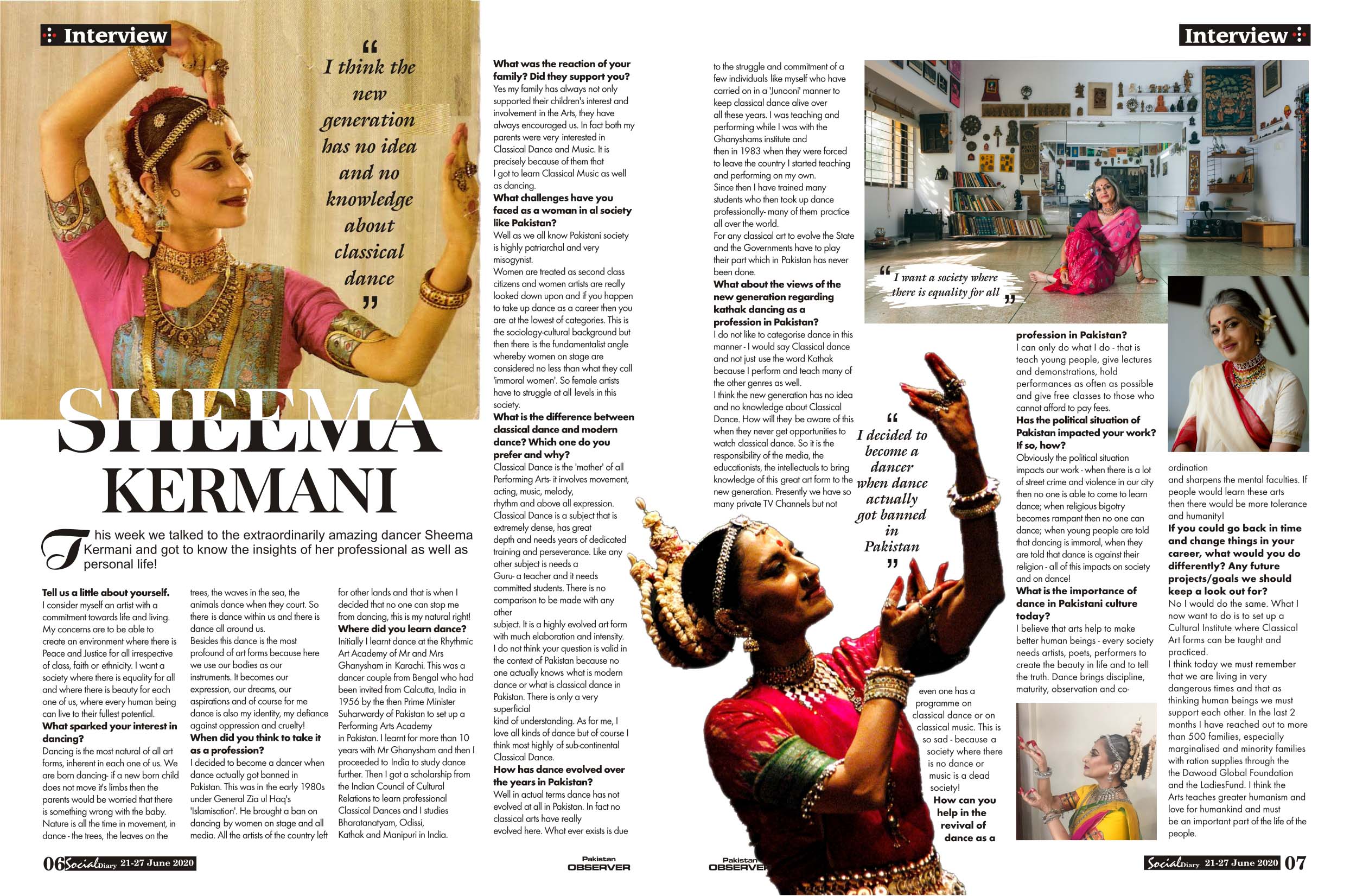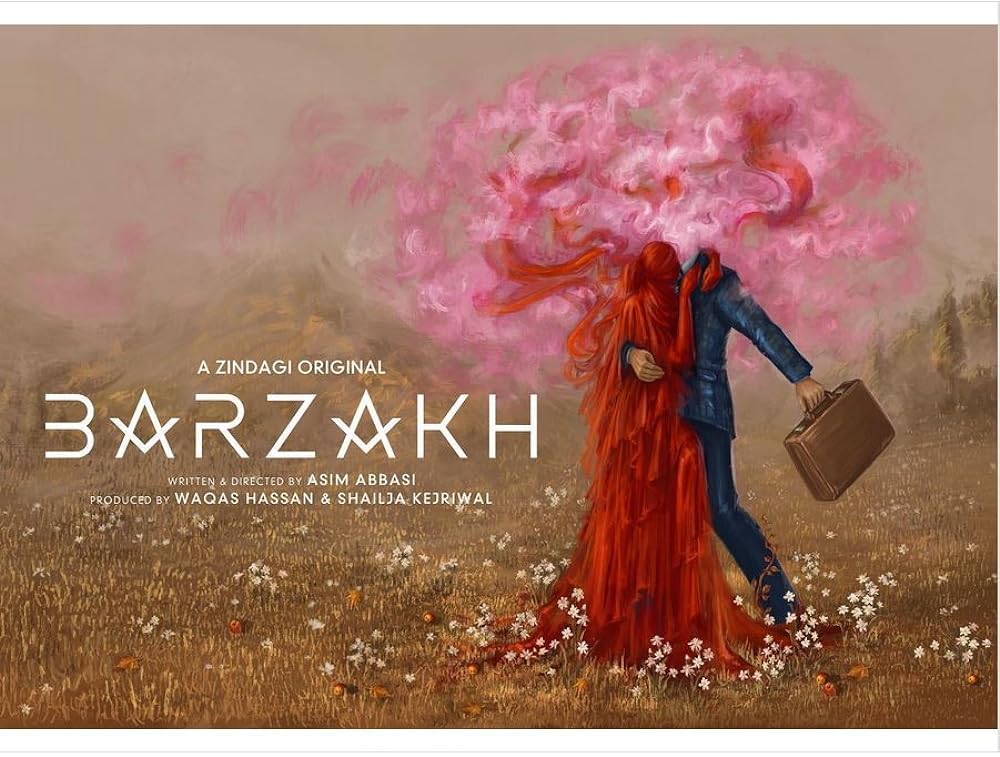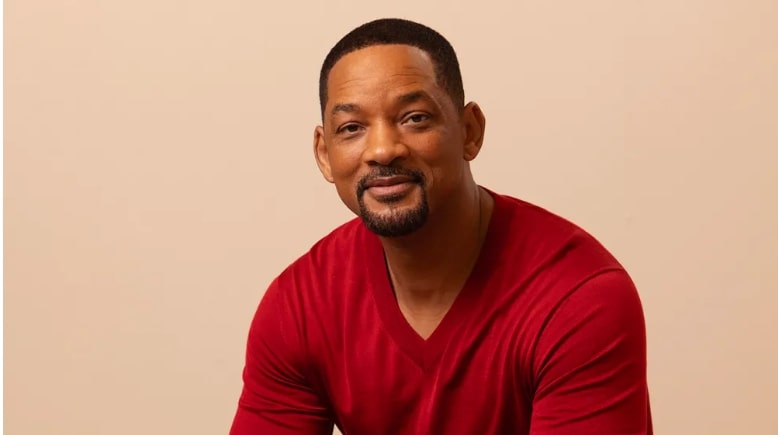This week we talked to the extraordinarily amazing dancer Sheema Kermani and got to know the insights of her professional as well as personal life!
Tell us a little about yourself?
I consider myself an artist with a commitment towards life and living. My concerns are to be able to
create an environment where there is Peace and Justice for all irrespective of class, faith or
ethnicity. I want a society where there is equality for all and where there is beauty for each one of us, where every human being can live to their fullest potential.
What sparked your interest in dancing?
Dancing is the most natural of all art forms, inherent in each one of us. We are born dancing- if a new born child does not move it’s limbs then the parents would be worried that there
is something wrong with the baby. Nature is all the time in movement, in dance – the trees, the leaves on the trees, the waves in the sea, the animals dance when they court. So there
is dance within us and there is dance all around us.
Besides this dance is the most profound of art forms because here we use our bodies as our
instruments. It becomes our expression, our dreams, our aspirations and of course for me dance is also my identity, my defiance against oppression and cruelty!
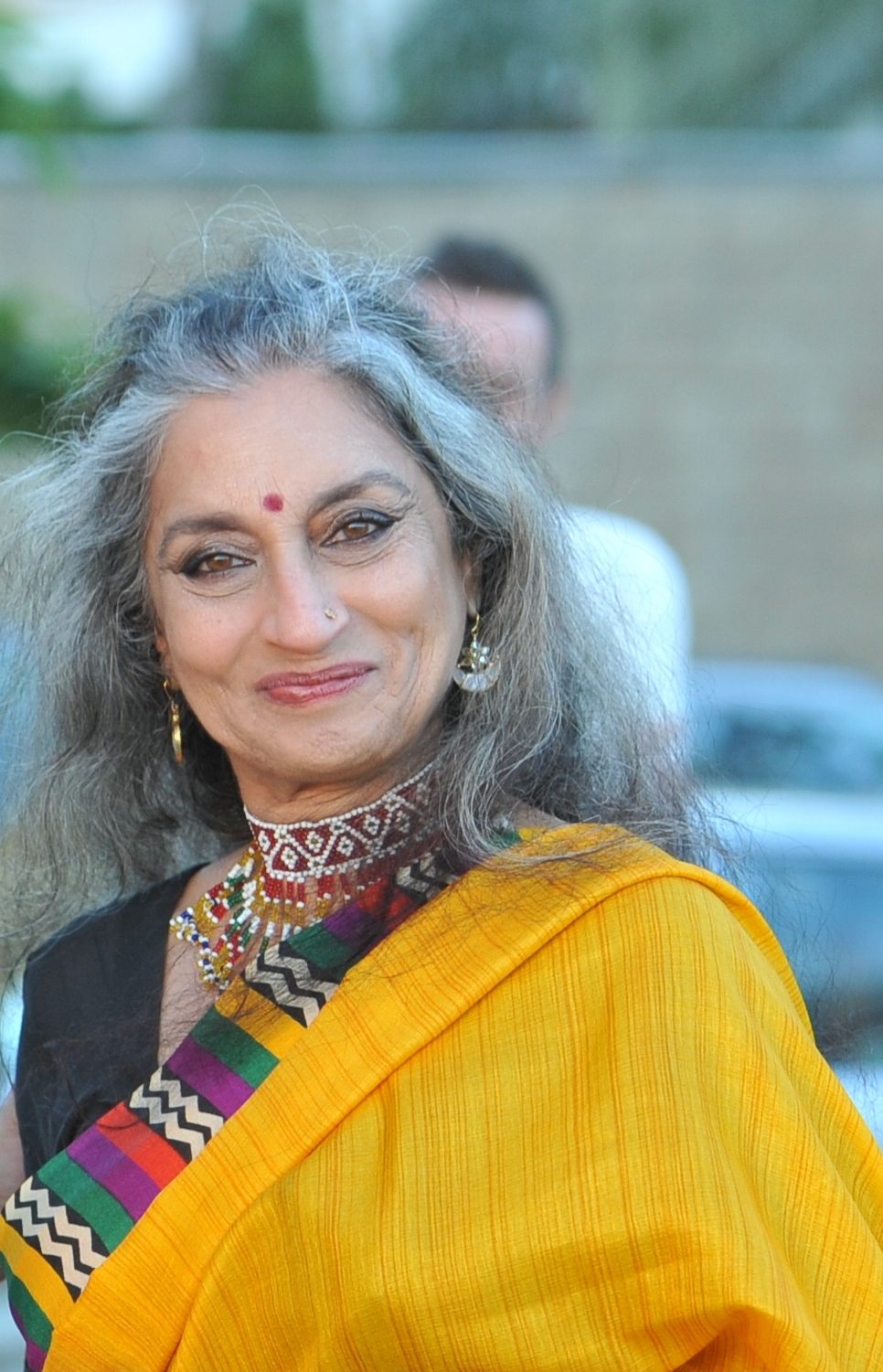
When did you think to take it as a profession?
I decided to become a dancer when dance actually got banned in Pakistan. This was in the early 1980s under General Zia ul Haq’s ‘Islamisation’. He brought a ban on dancing
by women on stage and all media. All the artists of the country left for other lands and that is when I decided that no one can stop me from dancing, this is my natural right!
Where did you learn dance?
Initially I learnt dance at the Rhythmic Art Academy of Mr and Mrs Ghanysham in
Karachi. This was a dancer couple from Bengal who had been invited from Calcutta, India in 1956 by the then Prime Minister Suharwardy of Pakistan to set up a Performing Arts Academy
in Pakistan. I learnt for more than 10 years with Mr Ghanysham and then I proceeded to India to study dance further. Then I got a scholarship from the Indian Council of Cultural
Relations to learn professional Classical Dances and I studies Bharatanatyam, Odissi,
Kathak and Manipuri in India.
What was the reaction of your family? Did they support you?
Yes my family has always not only supported their children’s interest and involvement
in the Arts, they have always encouraged us. In fact both my parents were very
interested in Classical Dance and Music. It is precisely because of them that
I got to learn Classical Music as well as dancing.
What challenges have you faced as a woman in al society like Pakistan?
Well as we all know Pakistani society is highly patriarchal and very misogynist.
Women are treated as second class citizens and women artists are really
looked down upon and if you happen to take up dance as a career then you are
at the lowest of categories. This is the sociology-cultural background but then there
is the fundamentalist angle whereby women on stage are considered no less
than what they call ‘immoral women’. So female artists have to struggle at all
levels in this society.
What is the difference between classical dance and modern dance? Which one do you prefer and why?
Classical Dance is the ‘mother’ of all Performing Arts- it involves movement, acting, music, melody,
rhythm and above all expression. Classical Dance is a subject that is extremely dense, has great
depth and needs years of dedicated training and perseverance. Like any other subject is needs a
Guru- a teacher and it needs committed students. There is no comparison to be made with any other
subject. It is a highly evolved art form with much elaboration and intensity.
I do not think your question is valid in the context of Pakistan because no one actually knows what is modern dance or what is classical dance in Pakistan. There is only a very superficial
kind of understanding. As for me, I love all kinds of dance but of course I think most highly of sub-continental Classical Dance.
How has dance evolved over the years in Pakistan?
Well in actual terms dance has not evolved at all in Pakistan. In fact no classical arts have really
evolved here. What ever exists is due to the struggle and commitment of a few individuals like myself who have carried on in a ‘Junooni’ manner to keep classical dance alive over
all these years. I was teaching and performing while I was with the Ghanyshams institute and
then in 1983 when they were forced to leave the country I started teaching and performing on my own.
Since then I have trained many students who then took up dance professionally- many of them practice all over the world.
For any classical art to evolve the State and the Governments have to play their part which in Pakistan has never been done.
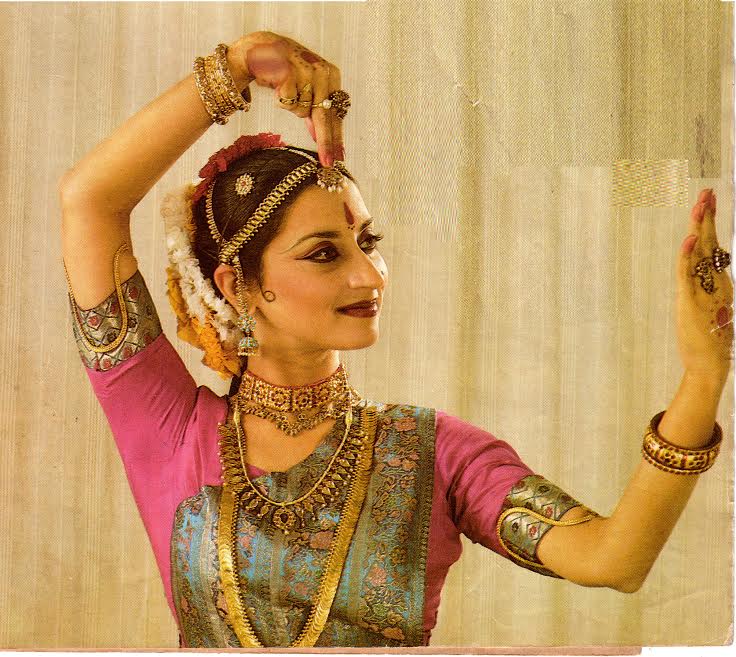
What about the views of the new generation regarding kathak dancing as a profession in Pakistan?
I do not like to categorise dance in this manner – I would say Classical dance and not just use the word Kathak because I perform and teach many of the other genres as well.
I think the new generation has no idea and no knowledge about Classical Dance. How will they be aware of this when they never get opportunities to watch classical dance. So it is the responsibility of the media, the educationists, the intellectuals to bring knowledge of this great art form to the new generation. Presently we have so many private TV Channels but not
even one has a programme on classical dance or on classical music. This is so sad – because a society where there is no dance or music is a dead society!
How can you help in the revival of dance as a profession in Pakistan?
I can only do what I do – that is teach young people, give lectures and demonstrations, hold performances as often as possible and give free
classes to those who cannot afford to pay fees.
Has the political situation of Pakistan impacted your work? If so, how?
Obviously the political situat
ion impacts our work – when there is a lot of street crime and violence in our city then no one is able to come to learn dance; when religious bigotry becomes rampant then no one can dance; when young people are told that dancing is immoral, when they are told that dance is against their religion – all of this impacts on society and on dance!
What is the importance of dance in Pakistani culture today?
I believe that arts help to make better human beings – every society needs artists, poets, performers to create the beauty in life and to tell the truth. Dance brings discipline, maturity, observation and co-ordination
and sharpens the mental faculties. If people would learn these arts
then there would be more tolerance and humanity!
If you could go back in time and change things in your career, what would you do differently? Any future projects/goals we should keep a look out for?
No I would do the same. What I now want to do is to set up a Cultural Institute where Classical Art forms can be taught and practiced.
I think today we must remember that we are living in very dangerous times and that as thinking human beings we must support each other. In the last 2 months I have reached out to more than 500 families, especially marginalised and minority families with ration supplies through the
the Dawood Global Foundation and the Ladies Fund. I think the
Arts teaches greater humanism and love for humankind and must
be an important part of the life of the people.
